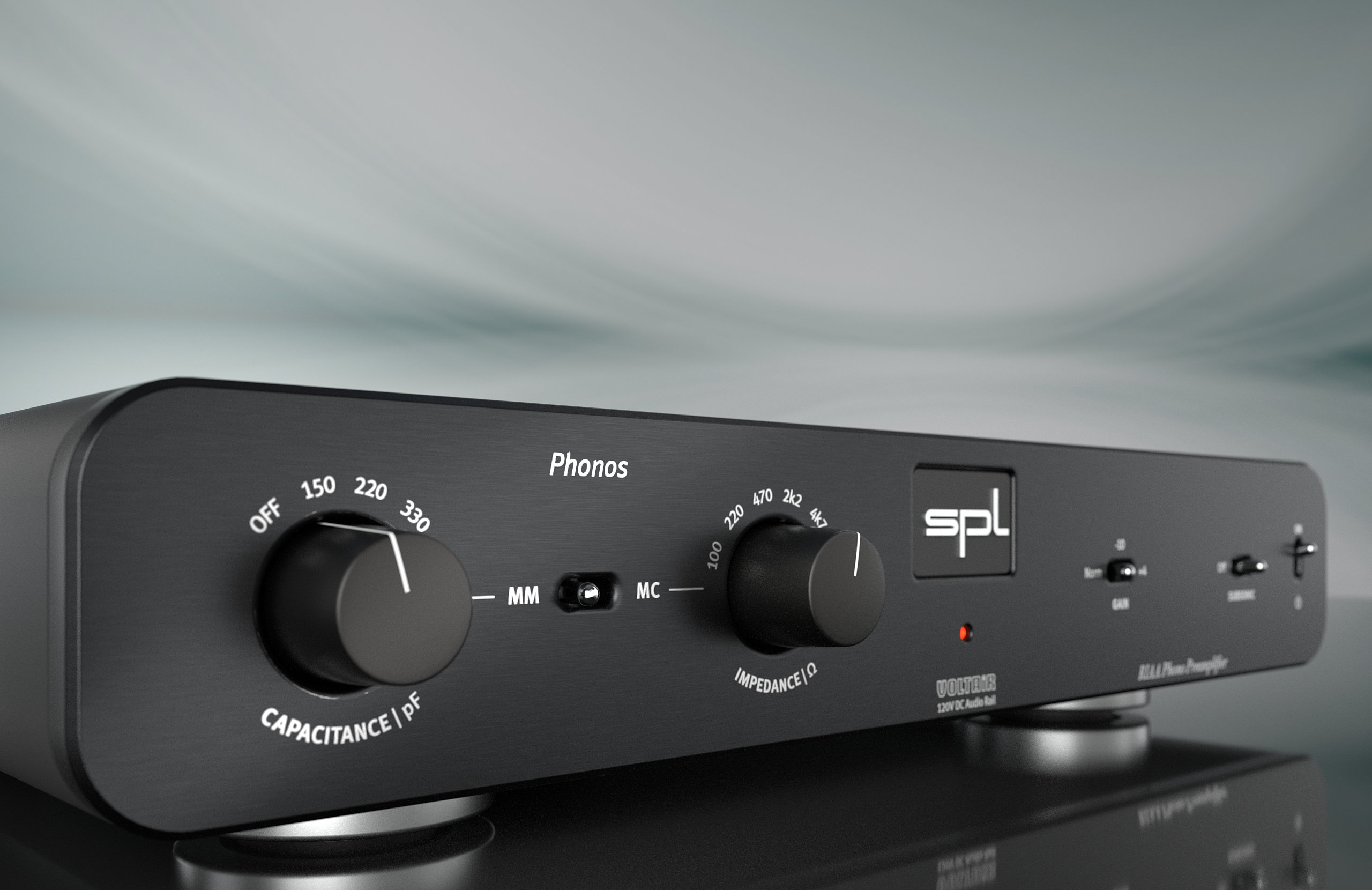
This phono preamplifier for Moving Magnet (MM) and Moving Coil (MC) pickup systems is based on the legendary Douglas-Self-Design.

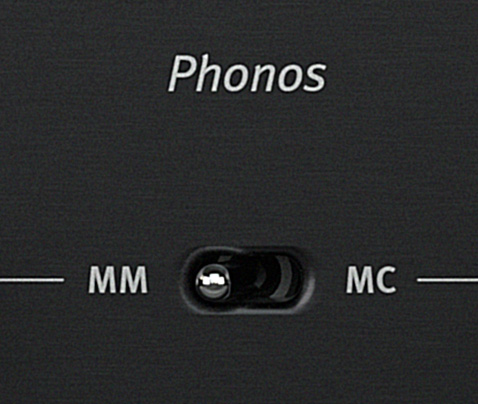
There are two pickup systems for record players:
Moving Magnet (MM) and Moving Coil (MC).
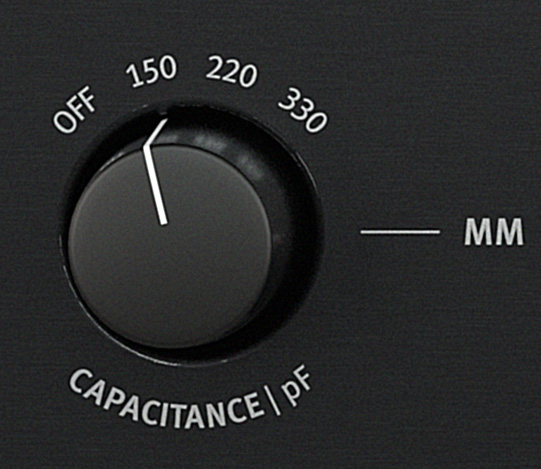
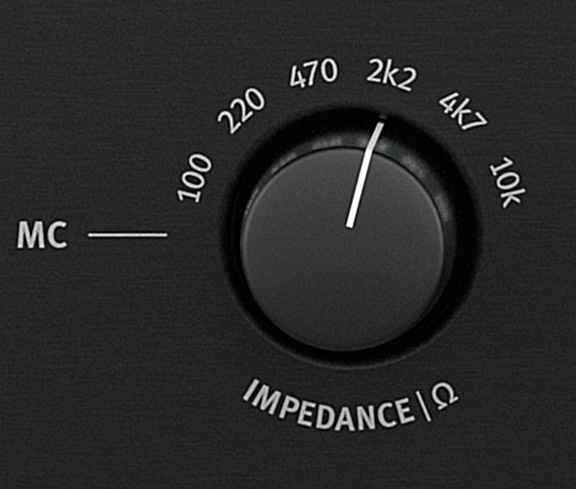
The MC pickup is also a small electromagnetic generator, but with the magnets firmly anchored and the coils moving between them, i.e. exactly the opposite of the MM pickup.
The output voltage, however, is very low at only a few hundred microvolts and is therefore more sensitive to noise and induced hum. This makes preamplifier design a challenge, because the very low output voltage must be pre-amplified extremely noise-free. Phonos offers one of the most powerful phono preamplifiers for MC systems with up to 71.5 dB preamplification. Thanks to the 120V technology, the preamplifiers are extremely low-noise, linear and phase-locked.
MC pickups have a very low inductance and impedance.
This means that the effects of cable capacitance (from turntable to preamplifier) are negligible. The impedance, however, is relevant and can be set in six positions: 100, 220, 470, 2.2 k, 4.7 k, and 10 kOhm.
If there is any doubt as to which impedance matches that of the pickup, the impedances can also simply be switched through until the linear frequency response is acoustically determined.

“The SPL Phonos is a phono stage with exceptional character. With so much sonic quality, the price is well below its musical equivalent.”
Wolfgang Kemper
HIFI STATEMENT
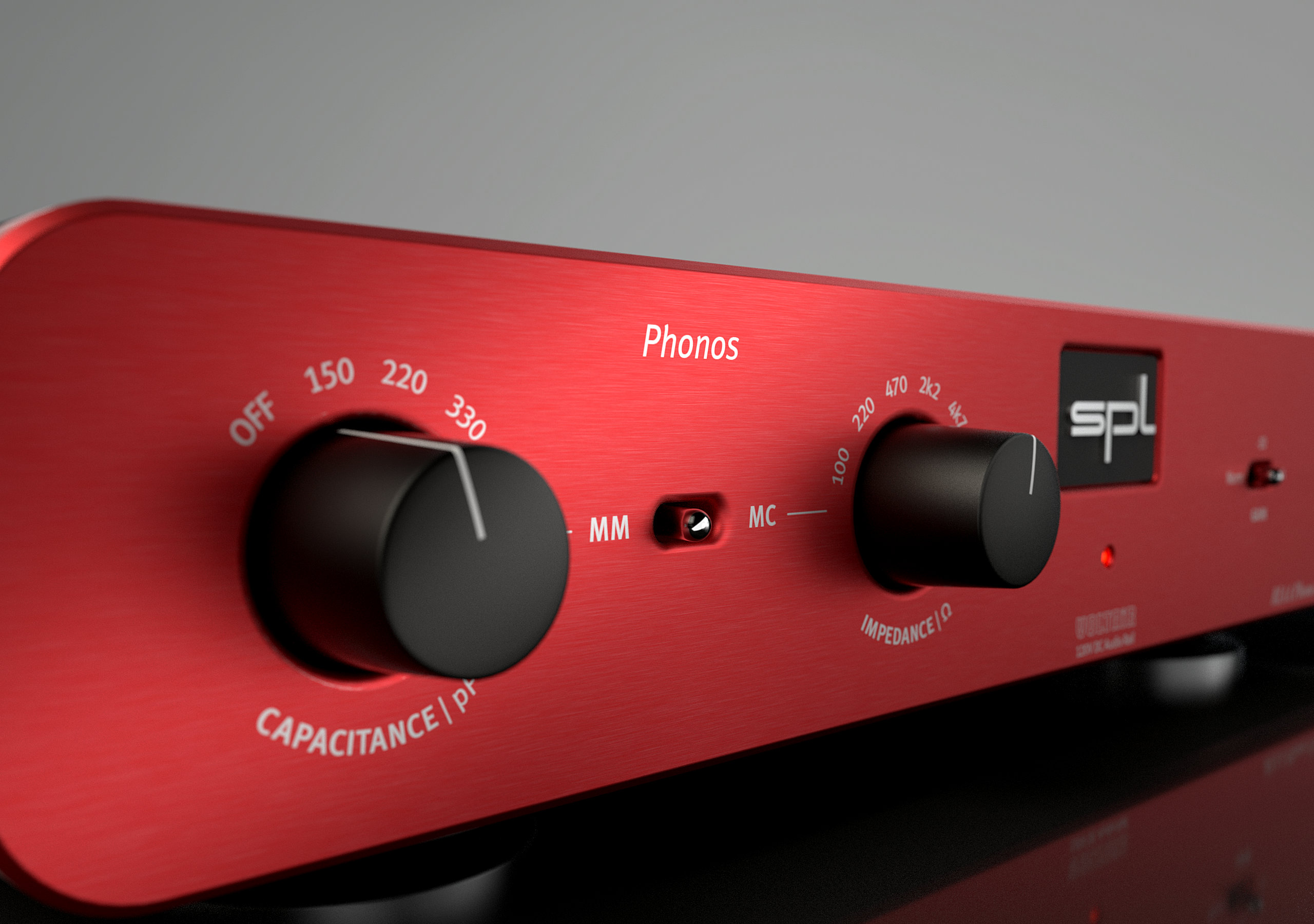
The gain control can be used to determine the amplifier power, in other words, the output level of the Phonos.
There are three values to choose from.
In the “Norm” position, the gain is +46 dB for MM systems and +67 dB for MC systems.
With the switch set to “-10”, the gain is reduced by 10 dB (MM = +36 dB, MC = +57 dB). This is optimal in combination with standard HiFi equipment that works with a reference level of -10 dBV.
If the switch is in the “+4” position, the gain is increased by +4 dB (MM = +50 dB, MC = +71 dB).
So the output level is about as loud as that of modern DA-converters at a reference level of 0 dBfs = 15 dBu.
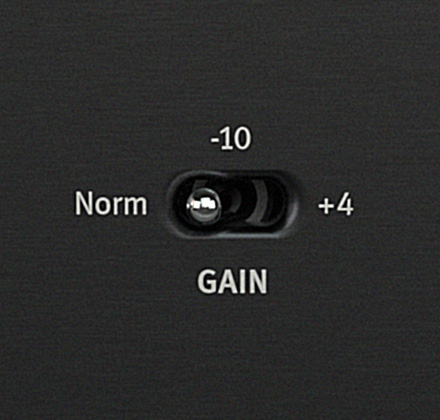
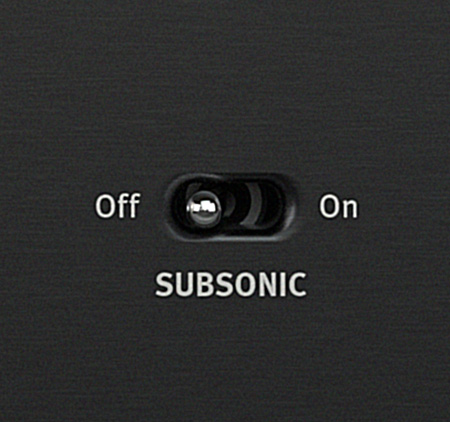
The rumbling of the turntable’s drive mechanism is also amplified by the high amplification of the bass range due to RIAA equalization in playback.
The Phonos offers a switchable subsonic filter to remove this rumble.

“The SPL Phonos is a phono amplifier just the way you want it to be: Completely uncomplicated in operation, robust and intelligently built. With just a few clicks it is tuned to the respective pickup system and then it's ready to go – and how!”
Alexander Aschenbrunner
HIFI STARS
Gold-plated RCA sockets are available for connecting the turntable and for outputting to a preamplifier such as the Director Mk2 or the Elector.
A ground connection for the turntable is designed as banana plug socket. The ground lead can be either clamped or plugged in.
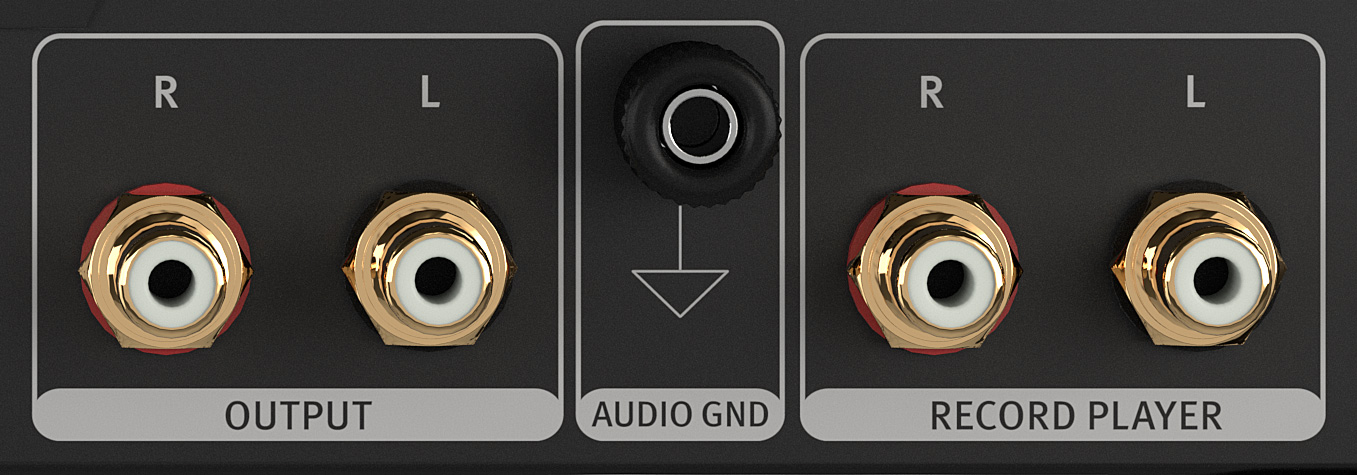
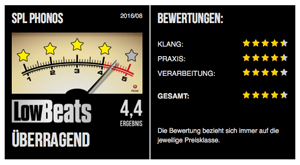
“SPL Phonos scores with detail accuracy, natural, full sound color and punchy and superior dynamics – or in the words of LowBeats tv host René Heller: it ‘rocks’.”
Holger Biermann
LowBeats
With all devices of the Professional Fidelity series we develop not only according to plan, but also by ear. Many important components are installed on the circuit boards using Through-hole technology. This way we can ensure that we can use the best sounding components.
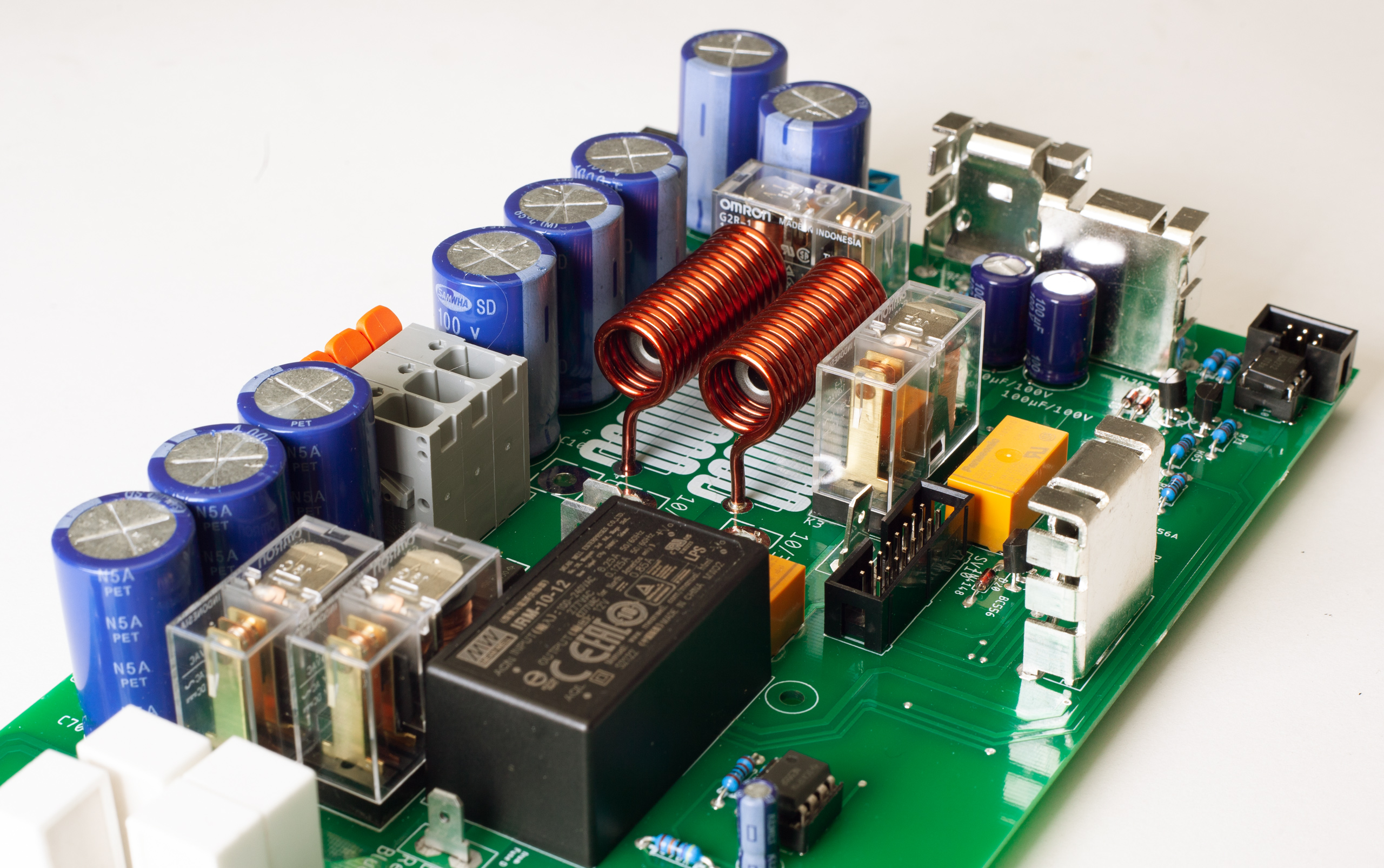
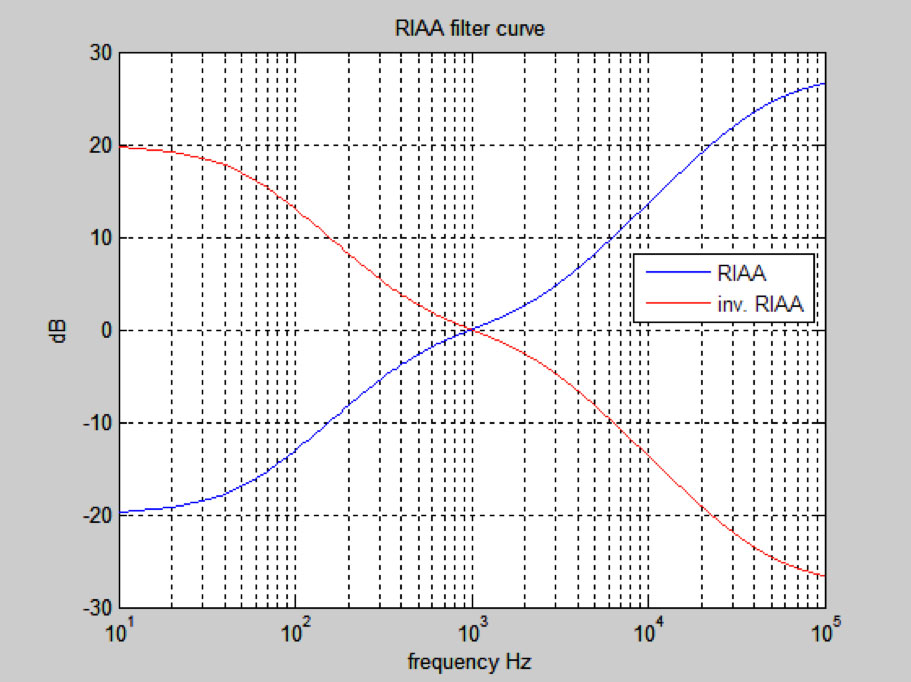
RIAA equalization is a specification for the recording and playback of records proposed by the Recording Industry Association of America (RIAA). The RIAA equalization curves introduced a global de facto industry standard for vinyl records in 1954.
RIAA equalization uses pre-emphasis to reduce low frequencies and boost high frequencies when the record is cut (blue RIAA curve).
The bass is reduced by up to 20 dB to provide more space and longer record play time.
The high frequencies are boosted by up to 25 dB to increase the signal-to-noise ratio between the noise of the record media to the audio signal.
During playback, exactly the opposite happens in the Phonos. The de-emphasis filter (red RIAA curve) compensates for the pre-emphasis and the result is a linear frequency response.
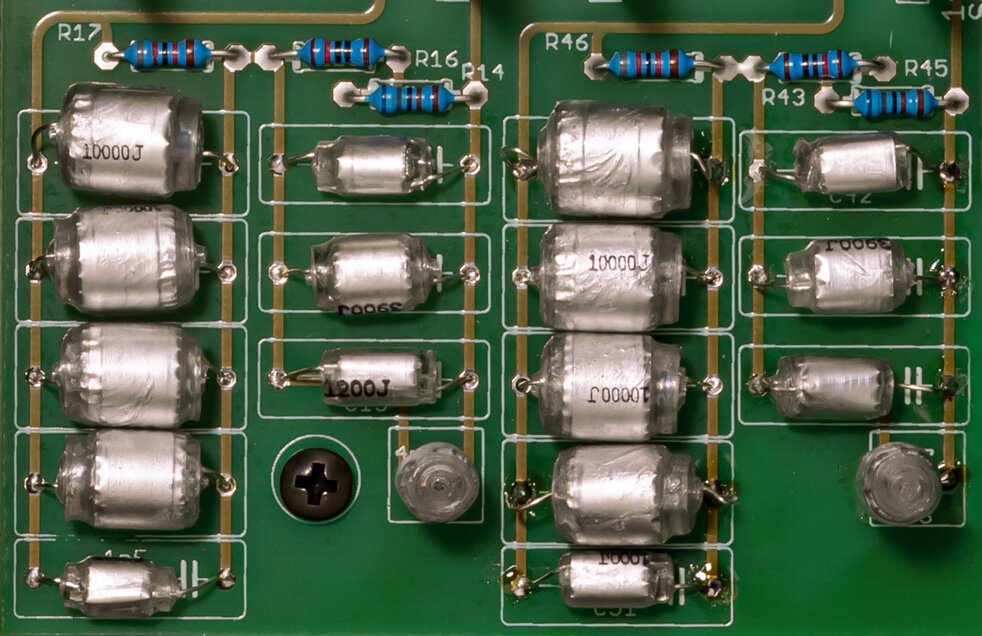
The RIAA equalization of the Phonos was developed according to the recommendations of Douglas Self.
Idea: Many small capacities instead of a few large capacities.
Advantages: The capacitors charge and discharge faster, which results in better resolution and faster impulse response.
Only audiophile Styroflex capacitors are used in the entire RIAA equalizer.
About the person: Douglas Self is a British electronics engineer with a strong penchant for audio. He holds honorary degrees from Cambridge University and teaches psychoacoustics at the University of Sussex.

“The SPL Phonos is an exceptionally good sounding phono preamplifier that has a considerable potential for addiction. Its joy of playing, its enormous dynamics and the accuracy with which it brings out the finest sound structures are always inspiring. The price-performance ratio is excellent.”
Freda Ressel
Professional Audio
The 120V technology is our reference technology. The 120V technology is unique in the world. It operates at a DC voltage of 120 volts. This is four times that of IC-based semiconductor op-amps. In our Professional Fidelity series, we refer to this unsurpassed technology as VOLTAiR technology.
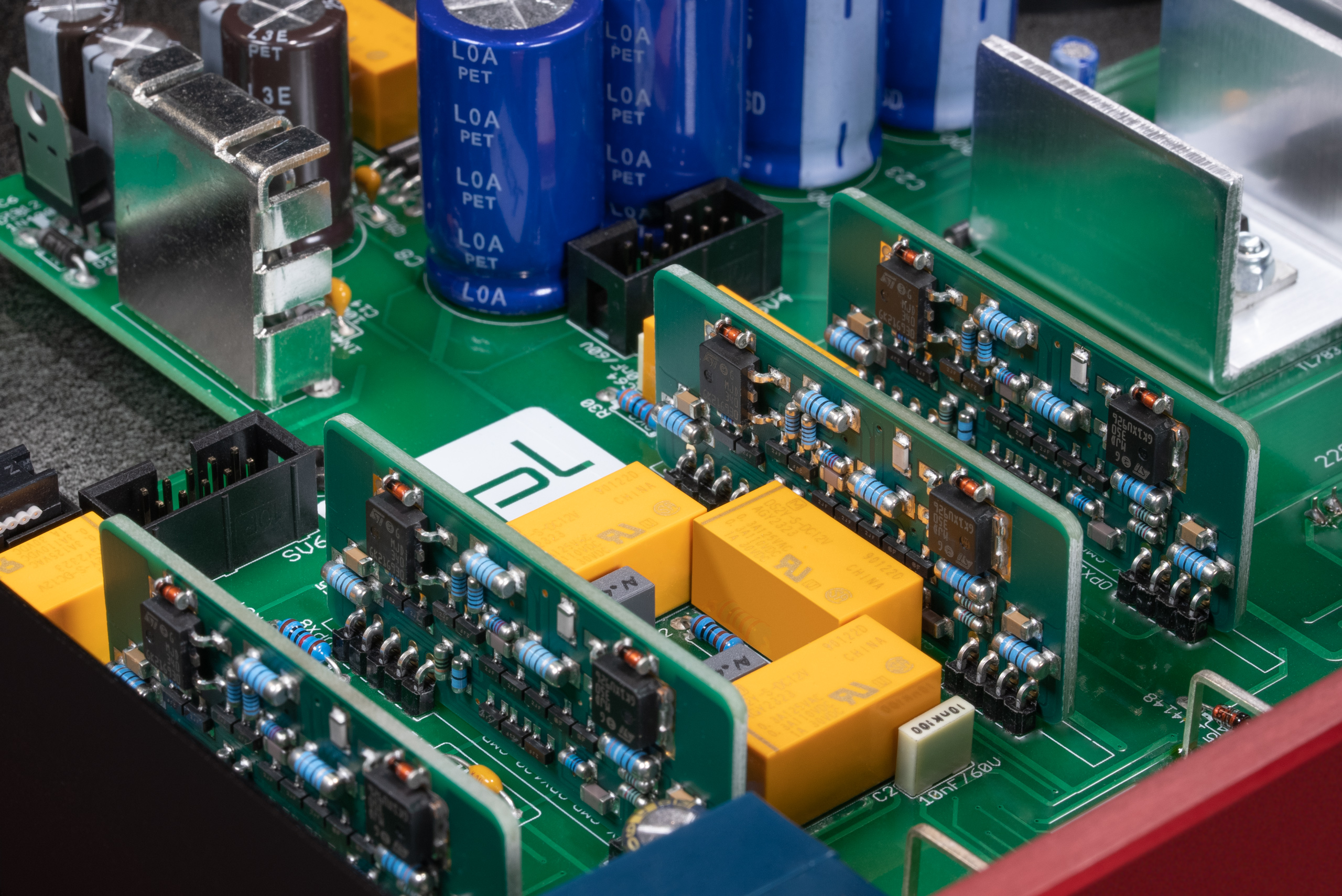
The 120V technology works with +/-60 V. To be able to handle such a high voltage, we have developed special proprietary operational amplifiers that can operate with a DC voltage of +/-60 V: the SPL 120V SUPRA operational amplifiers. This high voltage would destroy conventional components and operational amplifiers.
The 120V technology achieves exceptional technical specifications and sonic benefits. Technically, in terms of dynamic range, signal-to-noise ratio and headroom. Sonically, in terms of richness of detail and an absolutely relaxed listening experience.
By the way, the “120V” in the name of the technology has nothing to do with the local mains voltage from the mains power socket. This is about the operating voltage inside the device with which the audio signals are processed.
The mains voltage from the mains power socket is transformed to the required secondary voltage in the device’s internal linear power supply with toroidal transformer. Rectifiers convert this AC voltage into DC voltage required in the audio device.
VOLTAiR is a composition of the terms Volt and Air. Volt is the unit for electrical voltage and Air stands for the unlimited space the music can breathe in.
VOLTAiR symbolizes the perceived limitless dynamics resulting from high audio voltage.
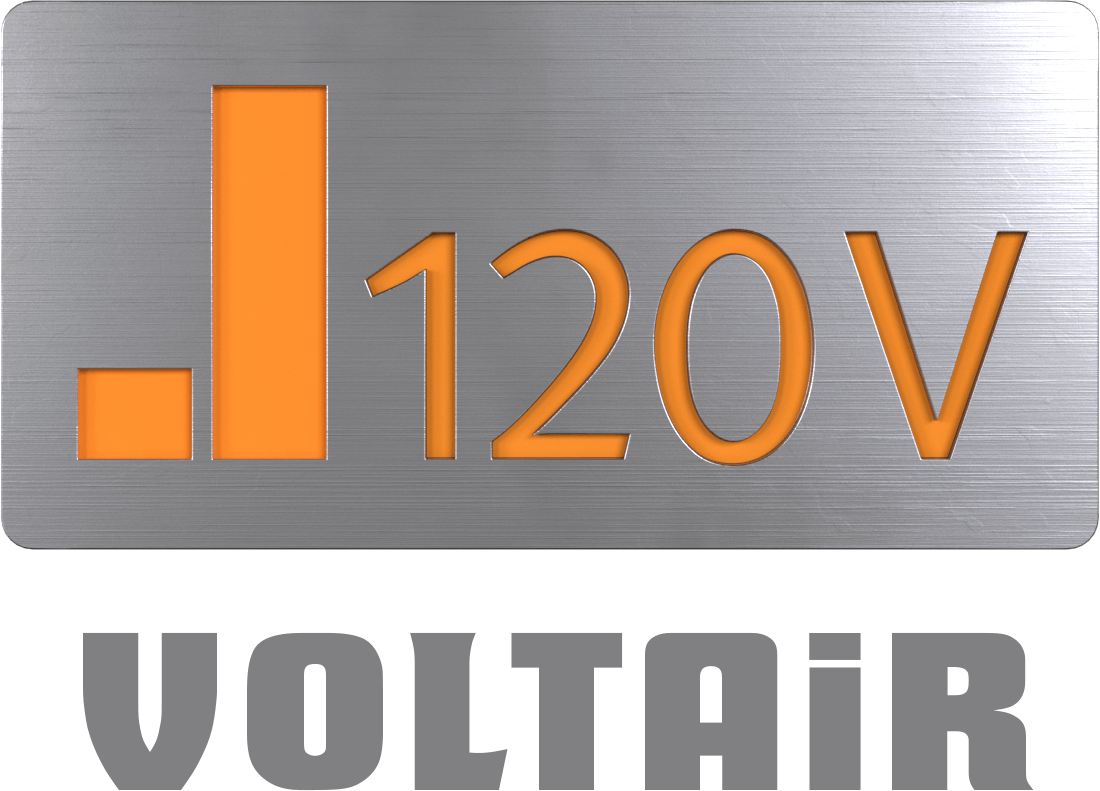
What exactly is that?
And what does it do?
Good questions need good answers.
And that’s what the 120V technology (VOLTAiR) video gives you.
Most audio devices work with an internal operating voltage of +/-15 volts and can thus process a maximum input level of +21.5 dBu. If a DAC, for example, has an output level of +22 dBu at 0 dBFS, level peaks of the music material would already cause overloads in the input stage of the device. All components in the audio device often operate at their limits. The result is an unsteady sound that causes stress and faster ear fatigue.
SPL devices with VOLTAiR technology can handle input levels of +32.5 dBu thanks to the higher internal operating voltage of +/- 60 volts – thus offering 12 dB more headroom. All components consequently operate continuously in the optimum operating range. The result is a very pleasant, natural and relaxed sound experience. So you can enjoy your music in every detail.
These diagrams clearly show the superiority of the VOLTAiR technology in comparison to other circuits with lower, common operating voltages.
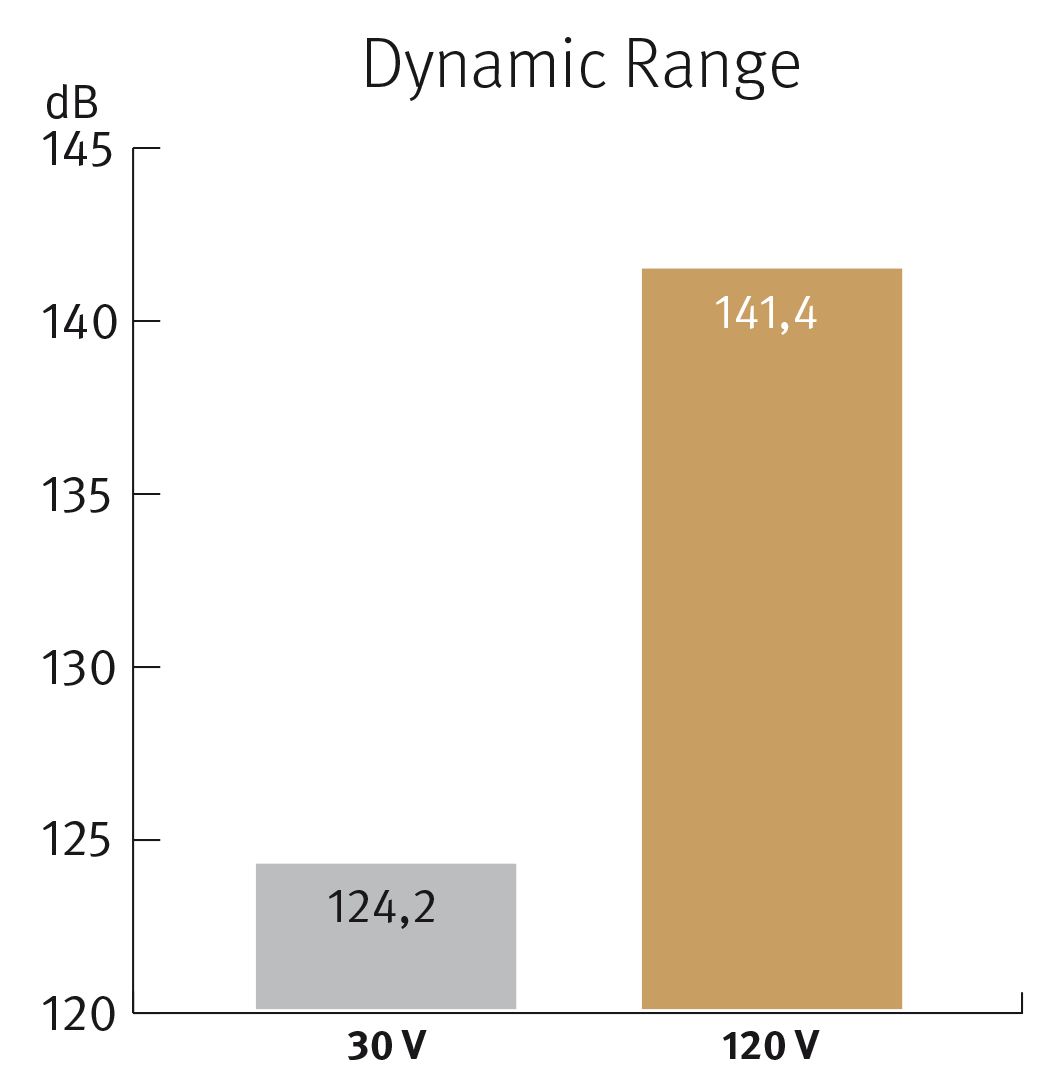
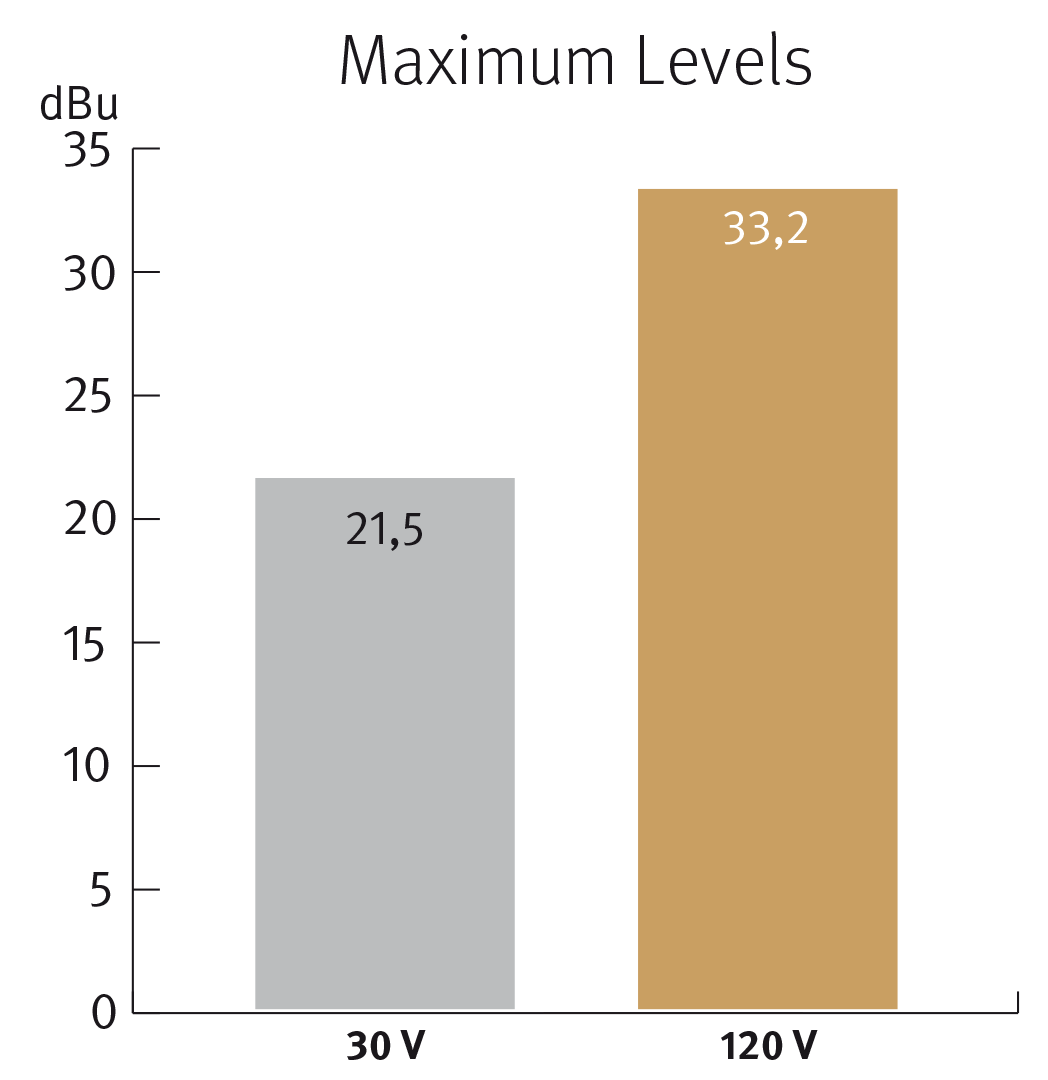
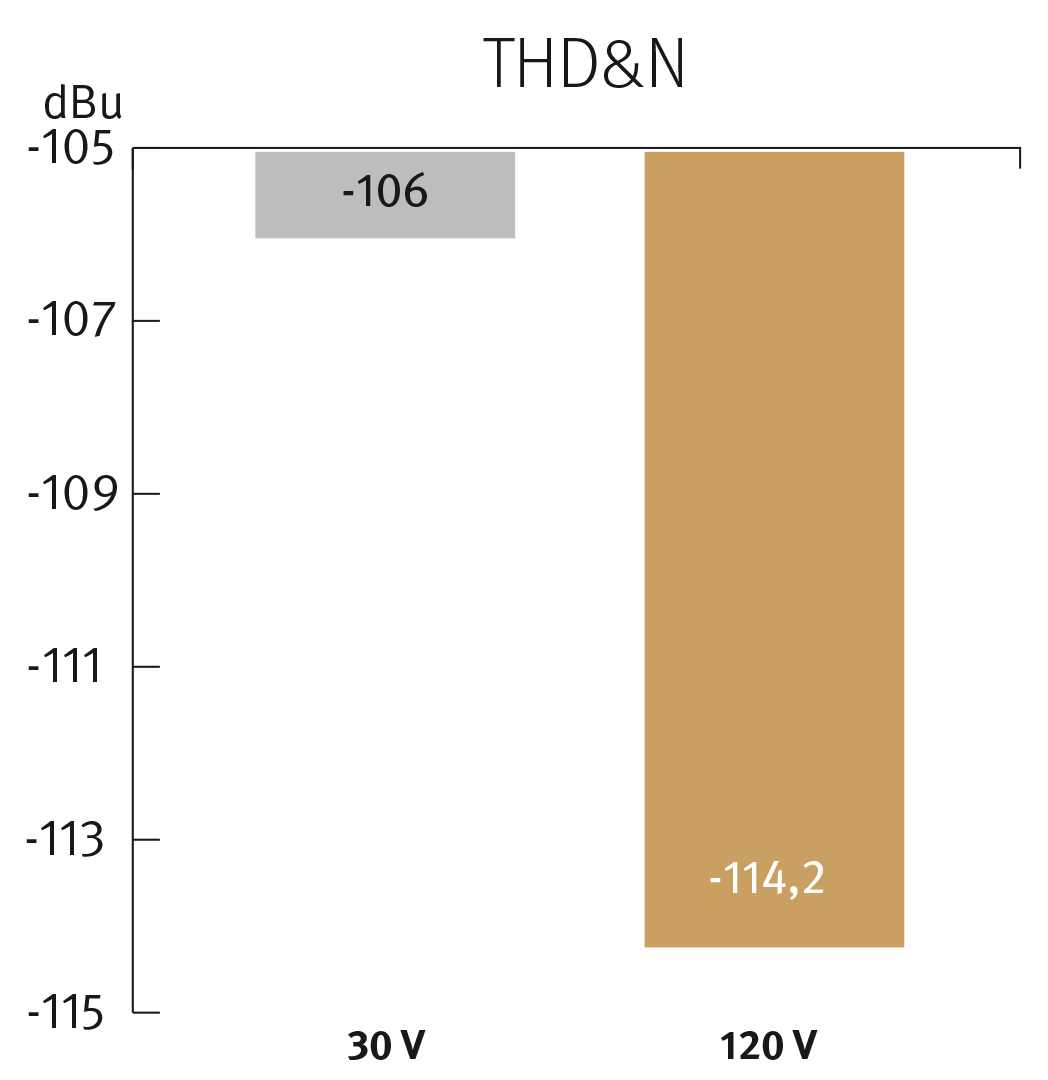
In the lab, we pitted Phonitor xe against the best audio measurement system and found that Audio Precision could not measure VOLTAiR technology.
That’s why we manufacture all devices in our own production facility in Niederkrüchten on the Lower Rhine, Germany.


The replacement of fuses and the switching of mains voltages must only be performed by qualified technicians. Fuses must only be replaced with fuses of the same type and specifications.
Reference: 0 dBu = 0,775V. All specifications are subject to change without notice.
In Stock!
The product is in stock in our warehouse in Niederkrüchten, Germany, and will be shipped the same or next working day.
We process the orders after receipt of the order and update the stock in the online shop regularly. If the product is no longer available at short notice due to high order volume, you naturally have the right to withdraw from the purchase (see Right of Withdrawal).
In any case, you will receive an e-mail with details of the delivery and the estimated delivery time.
Available soon!
The product is not in stock in our warehouse in Niederkrüchten, Germany. Usually it will be available again within 5 working days.
In any case, you will receive an e-mail with the details of the delivery and the estimated delivery time.
Of course you have the right to withdraw from your purchase (see Right of Withdrawal).
Currently unavailable.
This product is currently sold out and unavailable.
Auf Lager!
Das Produkt ist in unserem Lager Niederkrüchten vorrätig und wird noch am selben oder nächsten Werktag versendet.
Wir arbeiten die Bestellungen nach Bestelleingang ab und aktualisieren den Bestand im Online-Shop regelmäßig. Falls das Produkt wegen hohem Bestellaufkommens kurzfristig nicht mehr verfügbar ist, hast du selbstverständlich das Recht, vom Kauf zurückzutreten (siehe Widerrufbelehrung).
In jeden Fall erhältst du eine E-Mail mit den Einzelheiten der Lieferung und der voraussichtlichen Lieferzeit.
Bald verfügbar!
Das Produkt ist in unserem Lager Niederkrüchten nicht vorrätig. Gewöhnlich ist es innerhalb von 5 Werktagen wieder verfügbar.
Auf jeden Fall erhältst du eine E-Mail mit den Einzelheiten der Lieferung und der voraussichtlichen Lieferzeit.
Selbstverständlich hast du das Recht, vom Kauf zurückzutreten (siehe Widerrufbelehrung).
Zur Zeit nicht verfügbar.
Dieses Produkt ist derzeit ausverkauft und nicht verfügbar.

Due to Covid19 there are no events scheduled at this time.

Aufgrund von Covid19 sind derzeit keine Events geplant.
Notwendige Cookies sind für das ordnungsgemäße Funktionieren der Website unbedingt erforderlich. Diese Cookies stellen grundlegende Funktionalitäten und Sicherheitsmerkmale der Website sicher, anonymisiert.
| Cookie | Duration | Description |
|---|---|---|
| cookielawinfo-checbox-analytics | 11 months | This cookie is set by GDPR Cookie Consent plugin. The cookie is used to store the user consent for the cookies in the category "Analytics". |
| cookielawinfo-checbox-functional | 11 months | The cookie is set by GDPR cookie consent to record the user consent for the cookies in the category "Functional". |
| cookielawinfo-checbox-others | 11 months | This cookie is set by GDPR Cookie Consent plugin. The cookie is used to store the user consent for the cookies in the category "Other. |
| cookielawinfo-checkbox-advertisement | 1 year | The cookie is set by GDPR cookie consent to record the user consent for the cookies in the category "Advertisement". |
| cookielawinfo-checkbox-necessary | 11 months | This cookie is set by GDPR Cookie Consent plugin. The cookies is used to store the user consent for the cookies in the category "Necessary". |
| cookielawinfo-checkbox-performance | 11 months | This cookie is set by GDPR Cookie Consent plugin. The cookie is used to store the user consent for the cookies in the category "Performance". |
| gpnf_form_session_2 | 7 days | Saves entries of the spare parts request form |
| gpnf_form_session_4 | 7 days | Saves entries of the spare parts request form |
| viewed_cookie_policy | 11 months | The cookie is set by the GDPR Cookie Consent plugin and is used to store whether or not user has consented to the use of cookies. It does not store any personal data. |
Performance-Cookies werden verwendet, um die wichtigsten Leistungsindizes der Website zu verstehen und zu analysieren, was dazu beiträgt, den Besuchern ein besseres Benutzererlebnis zu bieten.
Andere nicht kategorisierte Cookies sind solche, die analysiert werden und noch nicht in eine Kategorie eingeordnet worden sind.
| Cookie | Duration | Description |
|---|---|---|
| complianz_policy_id | 1 year | No description |
Werbe-Cookies werden verwendet, um Besuchern relevante Werbung und Marketing-Kampagnen anzubieten. Diese Cookies verfolgen Besucher über Websites hinweg und sammeln Informationen, um maßgeschneiderte Werbung bereitzustellen.
Analytische Cookies werden verwendet, um zu verstehen, wie Besucher mit der Website interagieren. Diese Cookies helfen dabei, Informationen über Metriken wie die Anzahl der Besucher, Absprungrate, Verkehrsquelle usw. zu liefern.
Funktionale Cookies helfen dabei, bestimmte Funktionen auszuführen, wie z. B. das Teilen des Inhalts der Website auf Social-Media-Plattformen, das Sammeln von Feedbacks und andere Funktionen von Drittanbietern.